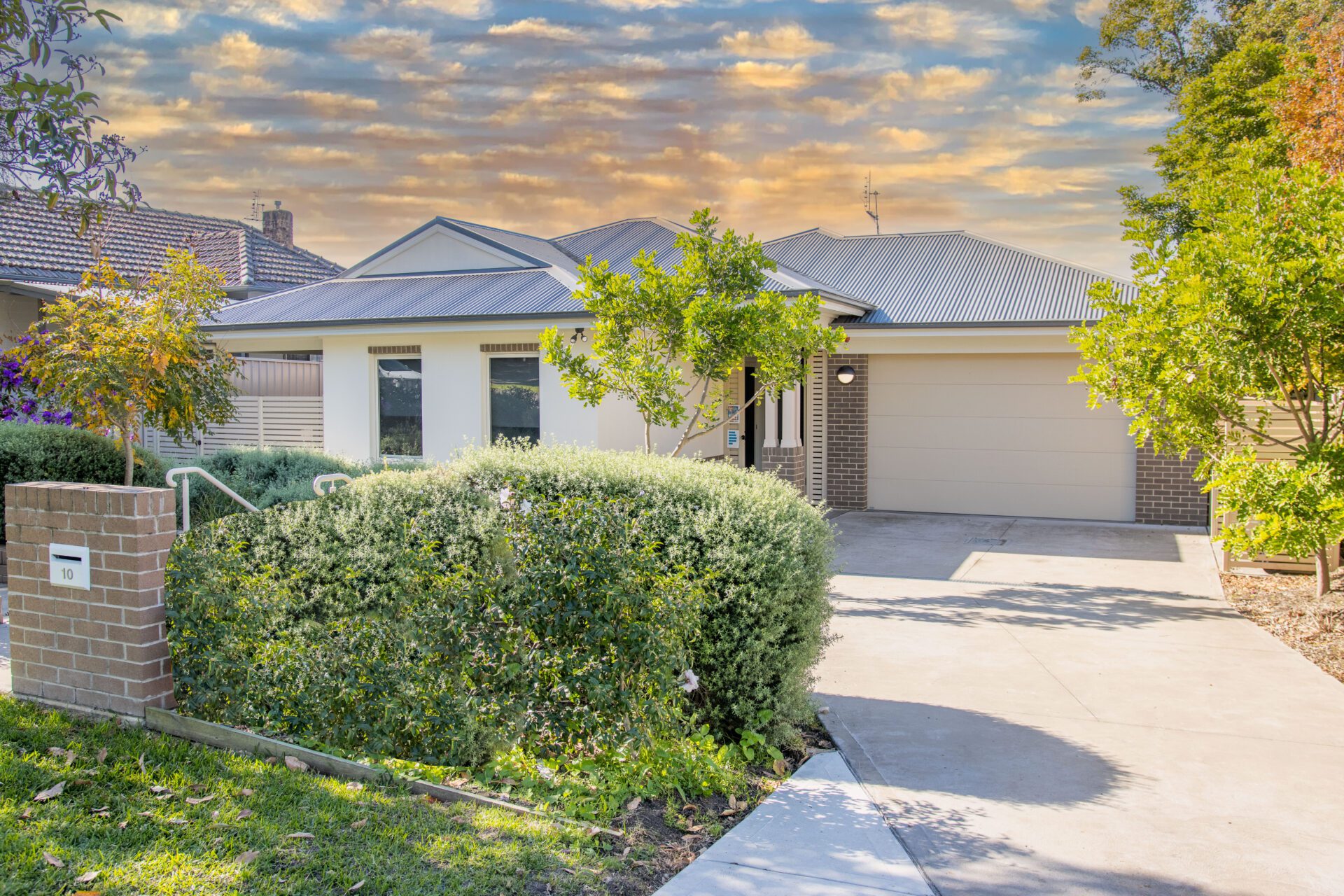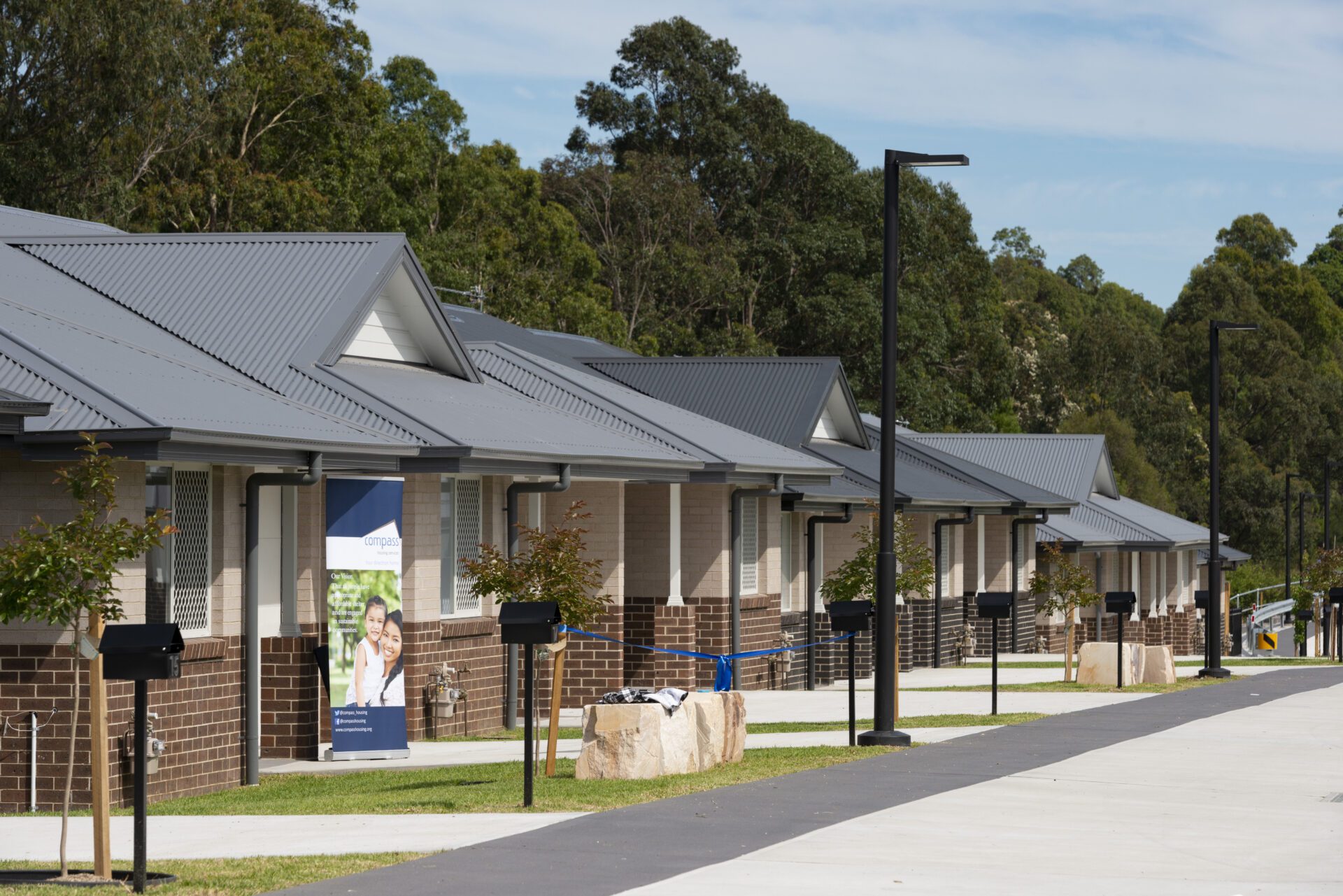Australia is facing a critical need for more social and affordable housing. Though these terms might be mistaken for one another, ‘social housing’ and ‘affordable housing’ are far from one and the same. If you’re looking for low–cost living, understanding these differences is key.
At Home In Place, we believe everyone deserves a safe and secure place to call home, which is why we provide both social and affordable housing options in multiple states.
This article explores the difference between social housing and affordable housing in Australia. Here, we define and compare these accommodation types so that you can determine which pathway may be most appropriate for your circumstances.

What is social housing?
Social housing is subsidised accommodation that provides both short-term and long-term rental options for households with low incomes or those who cannot afford to secure suitable accommodation on their own.
As of the 2021 Census, there were nearly 350,000 social housing units across Australia, with close to 165,000 people on waiting lists for public housing.
Social housing is available in two main forms:
- Public housing: Managed and owned by State and Territory Governments.
- Community housing: Managed, and in many cases owned, by not-for-profit organisations.
Unlike private rentals, this type of housing is allocated based on need rather than market competition.
This type of housing is often a lifeline for those who have experienced homelessness, domestic violence, or face other complex needs. Social housing offers a safe and dignified place to live, helping to stabilise lives and reduce the strain on costly health and judicial systems. For many, it’s more than just a roof over their heads—it’s a stepping stone to a better life, new skills and employment opportunities.
Discover social housing in NSW and Queensland.
What is affordable housing?
Affordable housing is a broad term that covers homes made accessible to low and moderate-income households so that they can manage basic living costs, such as groceries, utilities, transportation, healthcare, and education. These properties are available for rent or purchase at prices significantly lower than the local market rate.
However, defining affordable housing isn’t as straightforward as with social housing because its meaning varies across jurisdictions and government schemes.
In some states and territories, affordability is gauged by a household’s income, while in others, it’s simply defined as housing priced below market rates. Some regions focus exclusively on rental housing, while others include both rentals and homeownership.
For example, NSW and Victoria both target very low to moderate-income households, but they differ in approach: NSW views affordable housing as primarily rental properties for those who can’t afford the general market, while Victoria’s definition includes both rental and purchase options and even incorporates social housing into the mix.
Overall, however, this housing is designed for workers who don’t earn enough to afford market-rate rent in their communities.
Sound familiar? You’re not alone.
Research by the Australian Housing and Urban Research Institute (AHURI) underscores the critical need for affordable rental housing. It found that, as of 2016, 80% of very low-income households renting in the private market were in housing stress, spending more than 30% of their income on rent.
Explore affordable housing throughout NSW, Queensland and Victoria with Home In Place.

What is the difference between social housing and affordable housing?
Social housing and affordable housing differ in their primary goals, eligibility criteria, rental rates and providers.
Let’s dive into each factor.
Core purpose
The main objective of social housing is to offer stable, long-term housing to people who cannot afford the private rental market and for society’s most vulnerable people, such as individuals with disabilities, the elderly and those facing homelessness.
Eligibility criteria
Social housing is designed for individuals with the greatest need and very low incomes, whereas affordable housing serves a wider spectrum of low to moderate-income earners.
To qualify for social housing, applicants must satisfy specific eligibility requirements, including income and asset assessments, residency criteria, and a proven need for housing support.
Affordable housing is designed to serve a broader range of income levels than social housing, catering to low and moderate-income earners. That means you don’t need to meet social housing eligibility to apply for affordable housing, though those who qualify for social housing might also find themselves eligible for affordable housing.
To qualify for affordable housing, you must:
- Be an Australian citizen, permanent resident, or hold a valid visa to reside in Australia.
- Have a meaningful connection to the area where you’re seeking housing, whether through employment, education, family ties, or long-term residence.
- Fall within the low-to-moderate income bracket.
- Ensure your income is below the threshold set for your household type.
- Have no unpaid debts with Home in Place, Housing NSW, or any other community housing provider.
Rental rates
Social housing rent is generally calculated based on the tenant’s income, while affordable housing rent is set at a level below market rates.
Rents for social housing consider different factors based on whether the accommodation is public or community housing. In public housing, rents are typically set at 25% to 30% of the household’s income, with adjustments made based on household size and earnings. If this calculation results in a rent higher than the local market rate, the rent is capped at the market rate instead.
In community housing, the 25% to 30% income-based rent is usually reserved for tenants with very low incomes. Since community housing tenants qualify for Commonwealth Rent Assistance (CRA), this subsidy is directed to the community housing provider, often bringing the final rent closer to market levels.
The Australian Tax Office has ruled that GST does not apply to not-for-profit community housing providers charging rents below 75% of the market rate. Consequently, these providers often set rents at 74.9% or less to take advantage of this benefit.
Meanwhile, affordable housing often comes with various financial aid options, such as reduced rent or shared ownership programs, where costs are deliberately kept below market rates to make housing more accessible to those who qualify.
Rent pricing typically follows one of two approaches:
- Market-based discount: Rent is set at a certain percentage below the going market rate, usually between 20% and 25% lower. This means your rent is directly influenced by the current market rates for similar properties in your area.
- Income-based calculation: Rent is determined as a proportion of your household’s gross income, generally falling between 25% and 30%. If you’re eligible for Commonwealth Rent Assistance (CRA), the full amount of your CRA entitlement may also be included in your rent calculation.
Affordable housing providers may use one or both of these methods across their properties, depending on how each property was funded and the unique circumstances of the tenants they serve.
Applications
If you want to apply for social housing, you may do so online via your state or territory’s housing assistance website. For example, NSW applicants can visit Housing Pathways.
You can apply for affordable housing on non-government housing listing websites such as Welcome Mat (a platform specifically for affordable housing) and Domain. You can also apply for a vacancy directly with the affordable housing provider.
You’ll find all Home in Place affordable housing listings on Real Estate, categorised by location:
We encourage all affordable housing applicants to join us at the scheduled Open Home inspections. These events are the perfect opportunity to explore the property, ask any questions, discuss your eligibility, and receive an application form on the spot.
If attending an Open Home isn’t possible, simply give our Customer Call Centre a call at 1300 333 733. Our friendly team is ready to provide you with all the information you need about the property and program requirements, and can also email you the application form if needed.
Management
Social housing tends to be managed by government bodies and non-profit organisations, whereas affordable housing often involves a mix of private developers, government partnerships and community organisations.
More specifically, social housing may be overseen by government agencies, in which case it’s known as public housing or non-government entities, whereby it’s referred to as community housing.
Affordable housing, on the other hand, can be delivered by a range of entities, from private developers to non-profit organisations and government bodies.
Find social or affordable housing in NSW and Queensland with Home In Place
So, what is the difference between social housing and affordable housing?
Although both types of accommodation strive to make homes more accessible, they cater to distinct groups and involve different rental rates, eligibility criteria, application processes and management structures.
Social housing is designed to provide stable, long-term accommodation for the most vulnerable individuals, while affordable housing is geared towards tackling broader affordability challenges for a wider range of income levels.
When choosing the right type of housing, it’s important to consider your unique circumstances, as well as what’s available in your area.
At Home In Place, we provide both affordable housing and social housing across NSW and Queensland. For personalised support, please contact our team today.






